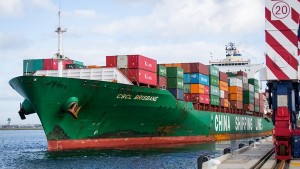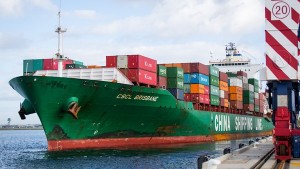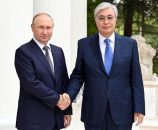Financial Times
 China reported stronger than expected trade data on Wednesday, the latest sign of a tentative revival in fortunes that paves the way for Friday’s release of first-quarter economic growth.
China reported stronger than expected trade data on Wednesday, the latest sign of a tentative revival in fortunes that paves the way for Friday’s release of first-quarter economic growth.
Exports surged 18.7 per cent in renminbi terms in March over the same month last year, after declines in both January and February. Imports also stabilised, dropping just 1.7 per cent compared with an 8 per cent fall in February.
In dollar terms, exports rose 11.5 per cent while imports fell 7.6 per cent for the period, reflecting the renminbi’s recent rise. The currency has gained 1.9 per cent against the dollar over the past two months.
China’s export sector has been buffeted by the slowdown in global trade, the dollar value of which has been shrinking since 2012 largely because of the slump in international commodities prices.
The International Monetary Fund this week warned that the world risked a “synchronised slowdown” but highlighted China as a rare bright spot among major economies. Chinese officials have been working to counter international investors’ increasingly negative outlook for the country’s economy.
Their cause has been boosted by a slew of better than expected data releases, including March inflation figures that showed producer price deflation had moderated.
This contributed to the IMF’s decision to revise upwards its forecast for Chinese economic growth this year, to 6.5 per cent from 6.3 per cent. At last month’s meeting of China’s parliament, Premier Li Keqiang projected economic growth of 6.5-7 per cent for 2016.
“China’s commodity imports should see further improvement soon,” said Zhou Hao at Commerzbank. A recent increase in iron ore inventories tallies with improving industrial production although Chinese steel exports have been the subject of an increasingly contentious international debate after mill closures across Europe and the US.
Chinese steel exports surged by 30 per cent in March compared with the year before, to 9.98m tonnes. First-quarter exports of 27.83m tonnes of the metal put the county on track to match a record 112m tonnes in 2015.
“China’s trade data for March point to healthy growth in import volumes and add to growing evidence that the extreme gloom of a few weeks ago about the domestic economy was misplaced,” said Marcel Thieliant and Mark Williams at Capital Economics.
Shanghai-traded stocks rose almost 2 per cent on the trade data, extending a strong two-month rally.
China’s foreign exchange reserves rose $10.3bn in March to $3.2tn, the first increase in five months, helped in part by large trade surpluses.
Wednesday’s trade data included a Rmb194bn trade surplus for March. Large net export statistics have helped bolster China’s economic growth figure over the past year.
China is trying to rebalance its economy from export-oriented manufacturing and heavy industry to domestic consumption and services. However, many analysts believe this transformation could be undermined by overly generous credit support to state-owned enterprises, especially “zombie” companies in sunset sectors such as cement, coal and steel.
The IMF said on Tuesday it was concerned the recent improvement in China’s economic outlook was driven by short-term stimulus measures that could exacerbate the country’s already large debt pile.



